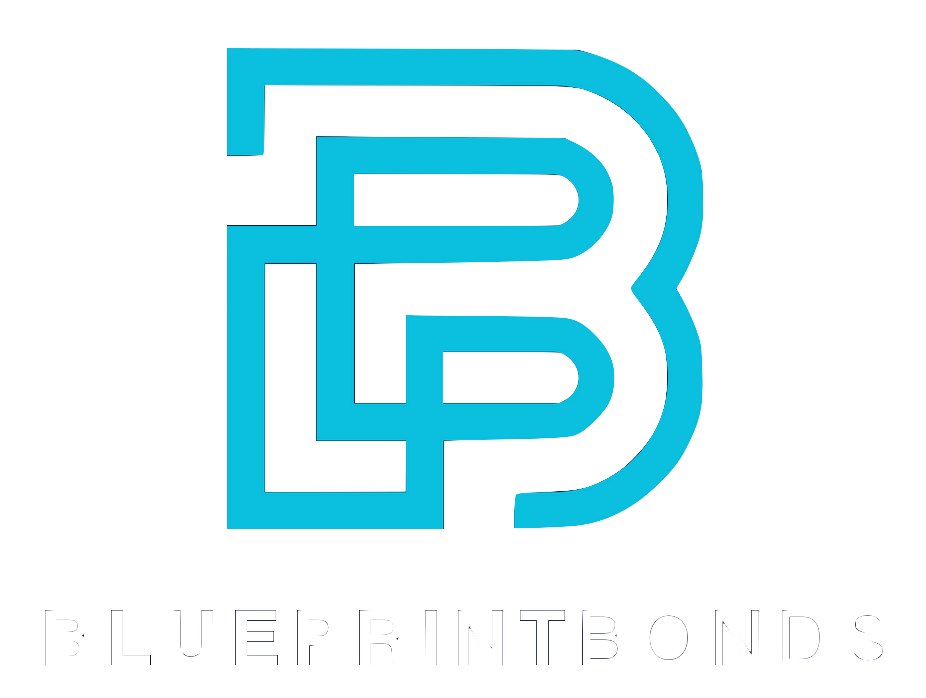Embarking on a construction project without a surety bond can feel like sailing a ship without a compass. The experience of securing a bond for the first time often comes with a steep learning curve, filled with unexpected challenges and invaluable insights. Surety bonds are more than just a bureaucratic requirement—they are a critical safety net that protects all parties involved and ensures projects stay on course.
In fact, unbonded construction projects are significantly more likely to default, with default rates potentially up to ten times higher than bonded ones. This stark reality underscores why bonding is considered essential public policy by industry leaders like Lee Covington, President and CEO of the Surety & Fidelity Association of America. Understanding this context helps frame the importance of the lessons learned through the bonding process.
Whether you are a contractor, project manager, or stakeholder, navigating the intricacies of bonding can be daunting. This article shares key lessons learned from that first bonding experience, offering practical advice and insights to help you avoid common pitfalls and appreciate the broader value of bonding in construction and beyond.
Understanding the Importance of Surety Bonds
Surety bonds serve as a financial guarantee that contractors will fulfill their obligations, providing peace of mind to project owners and stakeholders. The bond acts as a safety net, ensuring that if the contractor fails to meet the terms of the contract, the surety company will step in to cover the losses or complete the work.
One of the most eye-opening lessons from my first bonding experience was realizing how much risk unbonded projects carry. According to a report highlighted on markets.businessinsider.com, unbonded projects face default rates up to ten times higher than bonded ones. This statistic alone emphasizes why bonding is not just a formality but a crucial risk management tool.
Moreover, bonding requirements promote accountability and professionalism within the construction industry. As Lee Covington stated, "It's just good public policy" to require surety bonds, reflecting their role in safeguarding public and private investments alike.
In addition to protecting project owners, surety bonds also foster a competitive environment among contractors. When contractors are required to obtain bonds, they must demonstrate their financial stability and reliability, which in turn elevates the overall quality of work within the industry. This competitive pressure encourages contractors to maintain high standards, as they know that their ability to secure future projects may depend on their bonding history. As a result, the presence of surety bonds not only protects individual projects but also enhances the reputation of the construction industry as a whole.
Furthermore, the process of obtaining a surety bond often involves a thorough evaluation of a contractor's financial health, experience, and past performance. This vetting process serves as an additional layer of scrutiny, ensuring that only qualified and capable contractors are entrusted with significant projects. For project owners, this means a higher likelihood of successful project completion and reduced chances of costly delays or failures. The rigorous standards set by surety companies can also encourage contractors to invest in their own professional development, leading to a more skilled workforce that benefits the entire construction sector.
Lessons Learned from the Bonding Process
Lesson 1: Preparation is Key
One of the hardest lessons was underestimating the preparation needed before applying for a bond. The bonding company requires a thorough review of your financial health, project plans, and past performance. This means having your financial statements in order, demonstrating a solid track record, and being transparent about potential risks.
Failing to prepare adequately can delay approval or result in higher premiums. It’s essential to treat the bonding process with the same diligence as project planning itself. Additionally, it can be beneficial to consult with a bonding agent or a financial advisor who specializes in surety bonds. They can provide insights into what bonding companies are looking for and help you tailor your application to meet those expectations. Understanding the specific requirements of different surety companies can also give you a competitive edge, as some may prioritize certain factors over others, such as cash flow stability or project experience.
Lesson 2: Communication with Stakeholders
Another critical insight was the importance of clear communication with all parties involved. From the project owner to subcontractors and suppliers, everyone benefits from understanding the role of the bond. This transparency helps set expectations and builds trust, reducing the likelihood of disputes.
Effective communication also extends to the surety company. Keeping them informed about project progress and any challenges can facilitate smoother claims handling if issues arise. Regular updates can also foster a collaborative relationship, where the surety feels more invested in the project's success. Furthermore, establishing a clear line of communication for addressing concerns or questions can prevent misunderstandings and ensure that everyone is aligned with the project's goals and timelines. This proactive approach can be invaluable, especially when navigating the complexities of large-scale projects.
Lesson 3: Embrace Technology for Lessons Learned
Capturing and analyzing lessons learned during and after projects is often overlooked. Jim Rogers, a construction safety and quality expert, highlights that the industry struggles with this, and adopting new technology can help address the issue. Implementing systems to document experiences and outcomes can prevent repeating mistakes and improve future bonding applications.
Moreover, utilizing project management software that integrates lessons learned features can streamline this process. By creating a centralized repository for insights gained from each project, teams can easily reference past experiences when preparing future bond applications. This not only enhances efficiency but also promotes a culture of continuous improvement within the organization. Additionally, leveraging analytics tools can help identify patterns in project performance, enabling teams to make data-driven decisions that enhance their bonding strategies and overall project execution.
The Broader Impact of Bonding Beyond Construction
While surety bonds are most commonly associated with construction, the principles of bonding extend into other areas where trust and accountability are paramount. For example, customer loyalty programs rely heavily on building strong bonds between brands and consumers.
The Bond Loyalty Report™ analyzes millions of data points to understand how loyalty programs foster lasting relationships. These insights parallel the construction industry’s need for reliable partnerships backed by surety bonds. In a world where consumers are inundated with choices, the emotional connection created through loyalty programs can significantly influence purchasing decisions. Brands that successfully cultivate these bonds often see increased customer retention and advocacy, leading to a more sustainable business model.
Similarly, in education, bonds within communities can empower individuals and improve retention. Kenneth Smith, a veteran high school teacher, remarked that "BOND builds community while at the same time empowering us as individuals. It's not just building outward, but upward as well." This highlights the universal value of strong, trust-based connections. In educational settings, the establishment of trust not only enhances student engagement but also fosters collaboration among educators, parents, and community members. Programs that encourage mentorship and peer support exemplify how bonding can create a nurturing environment, ultimately leading to improved academic outcomes.
Furthermore, the impact of bonding can be seen in the healthcare sector, where trust between patients and providers is crucial. The establishment of strong relationships can lead to better patient compliance, improved health outcomes, and a more holistic approach to care. Healthcare professionals often emphasize the importance of empathy and communication, which are foundational elements in building these bonds. When patients feel valued and understood, they are more likely to engage actively in their treatment plans, illustrating how the principles of bonding transcend industries and contribute to overall well-being.
Why Capturing Lessons Learned is a Game-Changer
One of the most surprising statistics I encountered was that while 89% of lessons learned are captured at the end of projects, only 31% of organizations have a system to store and reuse this knowledge. This gap means valuable insights often get lost, leading to repeated mistakes and inefficiencies. The failure to document and share these lessons can create a cycle of frustration, as teams find themselves reinventing the wheel instead of building on past experiences. This not only hampers productivity but can also affect team morale, as members may feel their hard work is not being recognized or utilized effectively.
Implementing a structured approach to lessons learned can enhance project outcomes and bonding success. It ensures that every project, bonded or not, contributes to a growing repository of knowledge that benefits the entire organization. By establishing a culture that prioritizes reflection and learning, organizations can foster an environment where team members feel empowered to share their insights and experiences. This collaborative atmosphere not only leads to better decision-making but also encourages innovation, as teams are more likely to experiment and take calculated risks when they know they can learn from both successes and setbacks.
For contractors and project managers, this means investing in tools and processes that facilitate knowledge sharing and continuous improvement. Utilizing digital platforms that allow for easy documentation and retrieval of lessons learned can streamline this process significantly. Additionally, regular workshops or debrief sessions can be organized to discuss these insights, ensuring that they are not just filed away but actively engaged with. By making lessons learned a cornerstone of project management practices, organizations can create a dynamic learning loop that continually enhances their capabilities and competitive edge.
Final Thoughts: The Value of Being Bonded
Reflecting on the first time I got bonded, the experience was challenging but ultimately rewarding. The lessons learned underscored the critical role surety bonds play in mitigating risk, fostering trust, and ensuring project success. The process involved meticulous documentation and a thorough understanding of the project scope, which not only prepared me for the bonding application but also instilled a sense of confidence in my ability to navigate complex requirements. Each step of the bonding journey revealed insights into the financial and operational aspects of my business, reinforcing the importance of diligence and transparency in all dealings.
By approaching the bonding process with preparation, clear communication, and a commitment to capturing lessons learned, contractors can not only secure bonds more efficiently but also enhance their reputation and project performance. Engaging with underwriters and surety companies early on can provide valuable feedback and guidance, allowing contractors to tailor their approaches based on specific project needs. This proactive engagement fosters a collaborative environment where both parties can align their expectations, ultimately leading to smoother project execution and fewer disputes.
For those new to bonding, embracing these lessons can transform what might seem like a daunting hurdle into a strategic advantage. After all, bonding is more than a requirement—it’s a foundation for building stronger, more resilient projects and relationships. The ability to demonstrate financial responsibility and reliability through bonding not only opens doors to larger projects but also cultivates long-term partnerships with clients and stakeholders. As the construction landscape evolves, having a solid bonding strategy becomes increasingly essential, providing a competitive edge in a crowded marketplace.
To explore more about the economic value and performance benefits of surety bonding, visit this insightful
report on markets.businessinsider.com. This resource delves into the quantitative benefits of bonding, highlighting case studies that illustrate how effective bonding practices lead to improved project outcomes and financial stability. Understanding these dynamics can empower contractors to make informed decisions that enhance their operational strategies and bolster their market presence.




